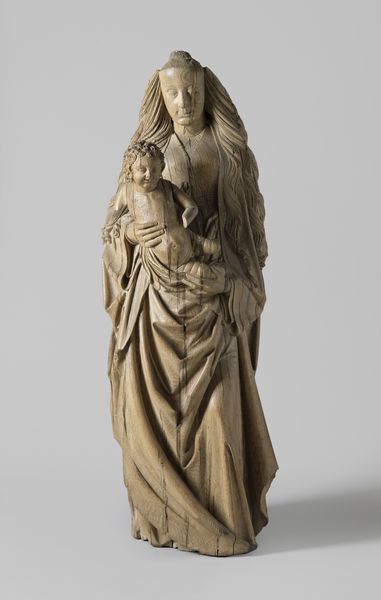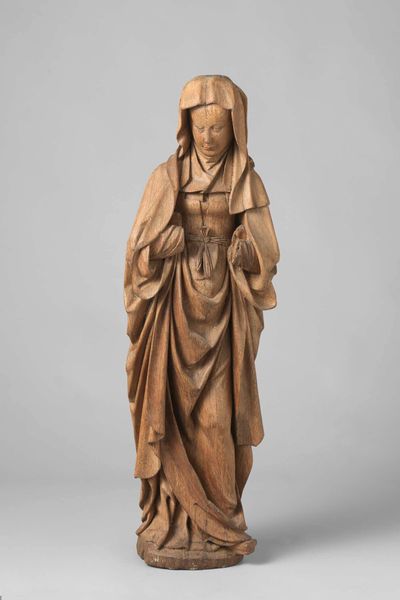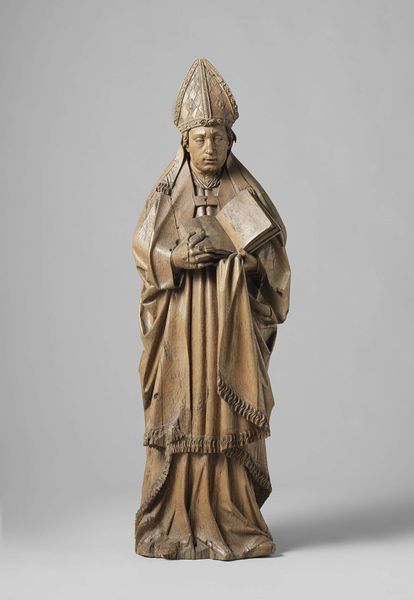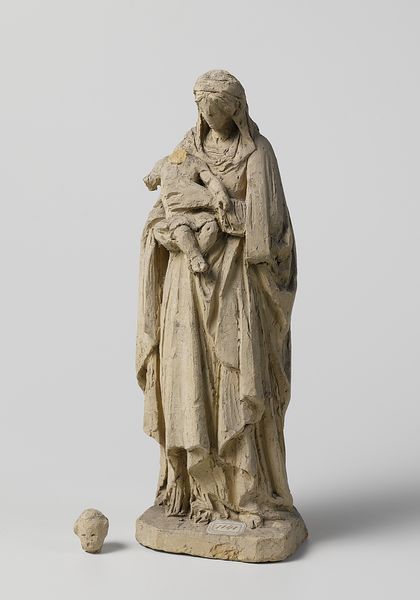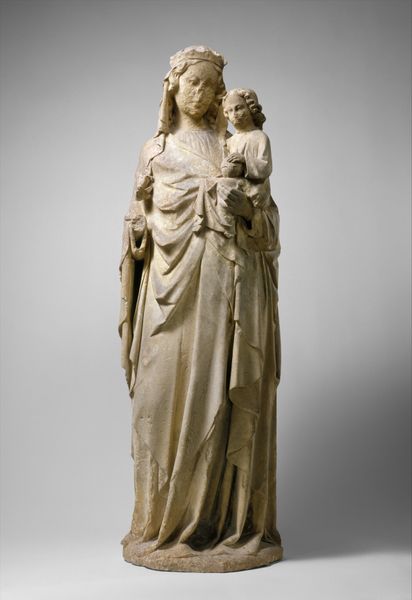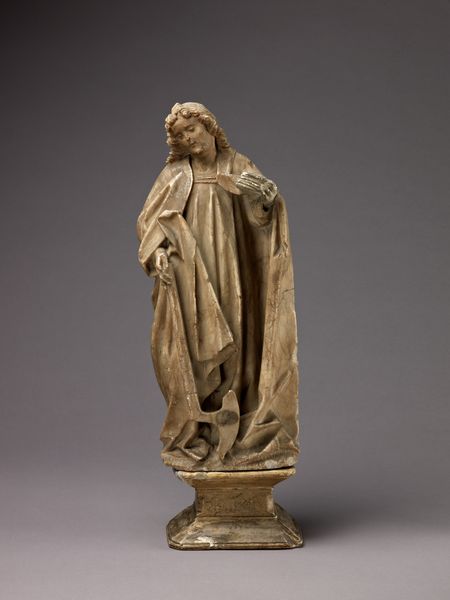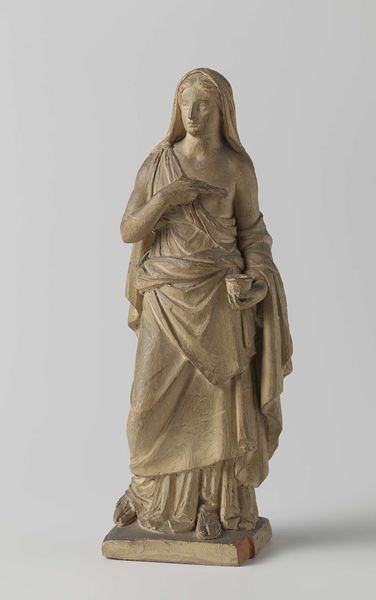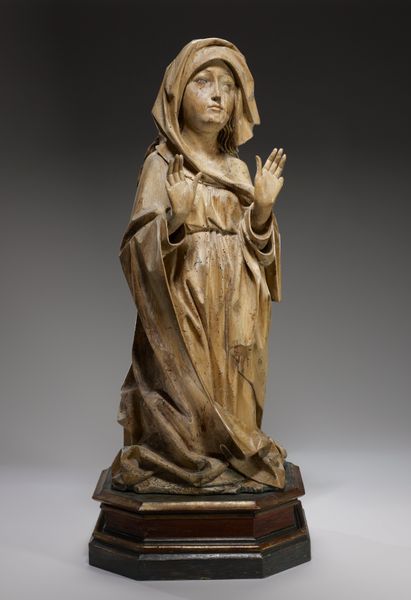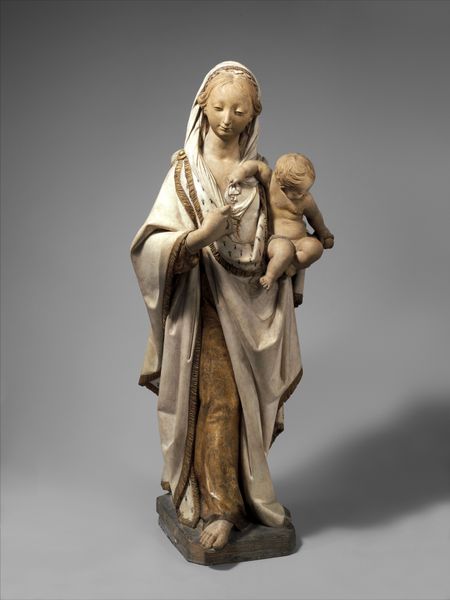
sculpture, wood
#
portrait
#
medieval
#
sculpture
#
figuration
#
sculpture
#
wood
#
northern-renaissance
Dimensions: height 92 cm, width 41 cm, depth 26 cm
Copyright: Rijks Museum: Open Domain
Editor: Here we have Hendrik Douverman’s wooden sculpture, *Saint Ursula and her Virgins*, created around 1520. The solemn stillness radiating from this carved piece is striking. What catches your eye in terms of historical context? Curator: I immediately consider the public role of religious imagery in the early 16th century. Saints like Ursula were vital in shaping community identity and moral behavior. What does this sculpture tell us about the function of art within the church and broader society at that time? Was it for devotional practice? Or meant for instruction? Editor: It’s interesting to think about the purpose... With all those virgins surrounding Ursula, perhaps it's a symbol of the ideal female community? Curator: Exactly! It also highlights the politics of imagery. Consider who commissioned the work. Was it a wealthy patron seeking to demonstrate piety, or a religious order trying to reinforce its teachings? How might that context influence the way we understand its message about female roles and virtues? The deliberate carving implies someone really wanted this idea displayed, yes? Editor: The positioning of Ursula and the other women certainly shows a specific perspective and cultural values. Did these kinds of sculptures typically travel to be displayed or stay in one location? Curator: Given its material—wood—it may have traveled, unlike larger stone works that are mostly in fixed positions. The museum being the place that the artwork now resides is another element that has influenced how people relate to art. How might that placement affect a modern viewer's understanding compared to someone encountering it five centuries ago? Editor: Shifting the conversation, I hadn’t fully appreciated how art pieces such as this were displayed in a much different social climate in the Northern Renaissance. This wooden Saint Ursula is such a potent reminder that art isn't created in a bubble, it is entrenched with religious intention. Curator: Indeed, viewing artworks such as these is essential for our insight into history.
Comments
rijksmuseum about 2 years ago
⋮
The Christian princess Ursula was murdered by Huns near Cologne together with her retinue of 11,000 virginal handmaidens. Some of them seek protection under Ursula’s gown in this sculpture. The saint is dressed as a well-to-do lady in the high fashion of the day: with a braided linen headdress and a ‘guimpe’ (a thin chemisette worn under a low-necked dress).
Join the conversation
Join millions of artists and users on Artera today and experience the ultimate creative platform.
